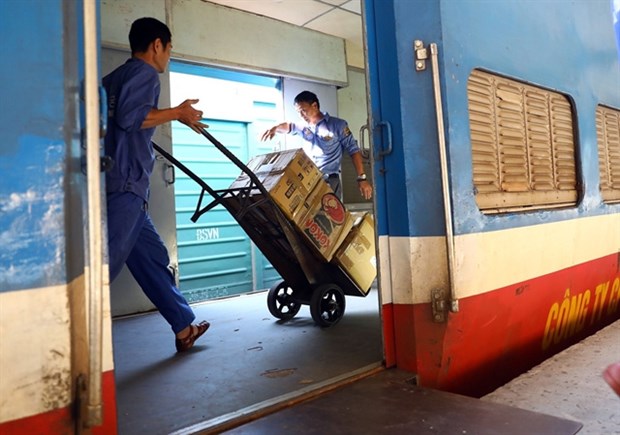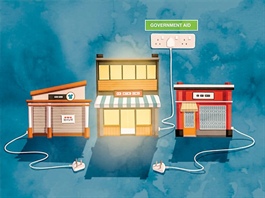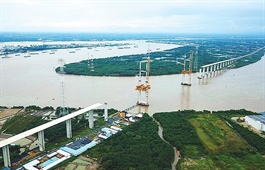Vietnam Railway Corporation braces for 85 million USD loss
Vietnam Railway Corporation braces for 85 million USD loss
The Vietnam Railway Corporation (VNR) faces the most difficult period in its history due to the COVID-19 pandemic and flooding in central Vietnam, according to VNR chairman Vu Anh Minh.

Illustrative image (Photo: VNA)
|
The Vietnam Railway Corporation (VNR) faces the most difficult period in its history due to the COVID-19 pandemic and flooding in central Vietnam, according to VNR chairman Vu Anh Minh.
The corporation expects to record a loss of about 2 trillion VND (85 million USD) this year while it gained a profit of 182 billion VND in 2019. Its consolidated revenue this year is estimated at 6.5 billion VND, just 77 percent of the figure last year.
According to the VNR report on production and business, in the first nine months of this year, cargo volume was estimated at more than 3.6 million tonnes or 99 percent of the same period of last year. The railway served about 3 million passengers, a reduction of 54.3 percent year-on-year. Therefore, its revenue in the first nine months decreased by 34.2 percent to 2.27 trillion VND.
The railway industry faces increasing competition from other means of modern transport such as aviation, while the railway sector is still not modernised, causing the number of passengers using trains to decrease, according to Minh.
VNR's only advantage is its ability to transport passengers on short and medium routes on which airlines have a small number of flights such as Hanoi-Quang Binh, Hanoi-Lao Cai and Sai Gon-Nha Trang.
To recover, Minh said resuming the industry would depend on the development of the pandemic. In addition, the implementation of the 7 trillion VND project package to upgrade the Hanoi-HCM City railway would reduce its capacity.
The railway industry is unlikely to recover in 2021, according to Minh. It needs at least 3-4 years to recover production and business. The capacity of transporting passenger and cargo could increase after the infrastructure upgrade is completed, then revenue could increase.
This project is expected to finish on June 30, 2021, but this deadline looks likely to be missed. Implementation of this project could be extended by six months, making the VNR lose trillions of VND of revenue.
Passenger transportation has faced many difficulties so the railway industry has promoted freight transport on domestic or international railway routes from 2019, according to the corporation.
For cross-border routes, VNR’s trains have transported cargo weekly through China, Kazakhstan, Russia and Europe. Besides transporting traditional products such as iron, steel, cement and petroleum, the corporation has opened routes to transport goods containers of Viettel and Vietnam Post.
To attract more customers, the corporation has also offered services to transport frozen goods, and import and export fruits.
However, the corporation has struggled to use standard train cars on the Chinese railway. Therefore, it must transfer goods to other train cars at Bang Tuong Station to transport goods from Vietnam to China and third countries.
Minh said amid the COVID-19 pandemic, freight transport had played a key role despite the low revenue. Freight transportation in the first nine months of this year increased by about 10 percent year-on-year, of which it surged by 20 percent in September.
According to Nguyen Hoang Thanh, deputy general director of the Railway Transport and Trade Joint Stock Company (Ratraco), trains can transport a large volume of cargo over long distances with high safety. Transport by train takes 18-20 days compared to 40-45 days for marine transport. This is a great competitive advantage, especially for goods that need particular storage conditions and fast delivery times.
At present, the railway industry was seeking new sources of cargo and international routes for transporting cargo, Minh said. However, the warehouse system along the railway line, the ability to collect goods and high loading and unloading costs were barriers for this plan.

























